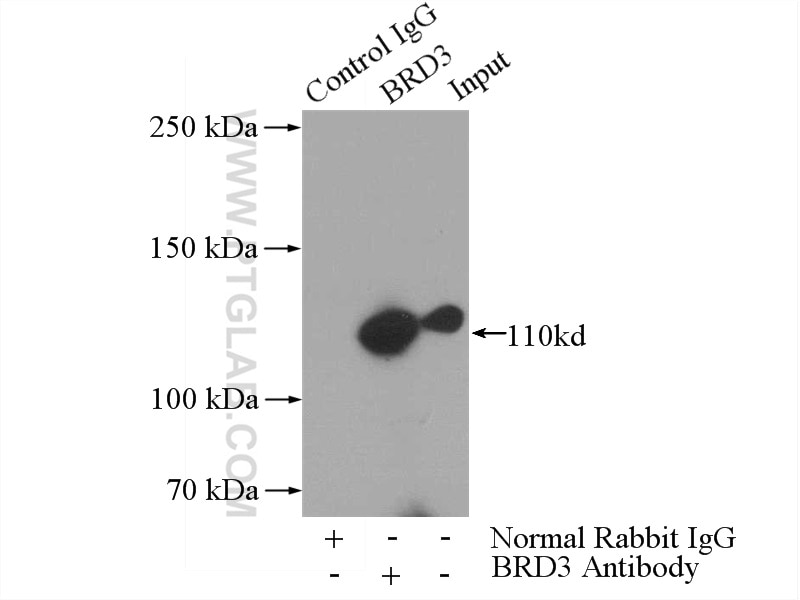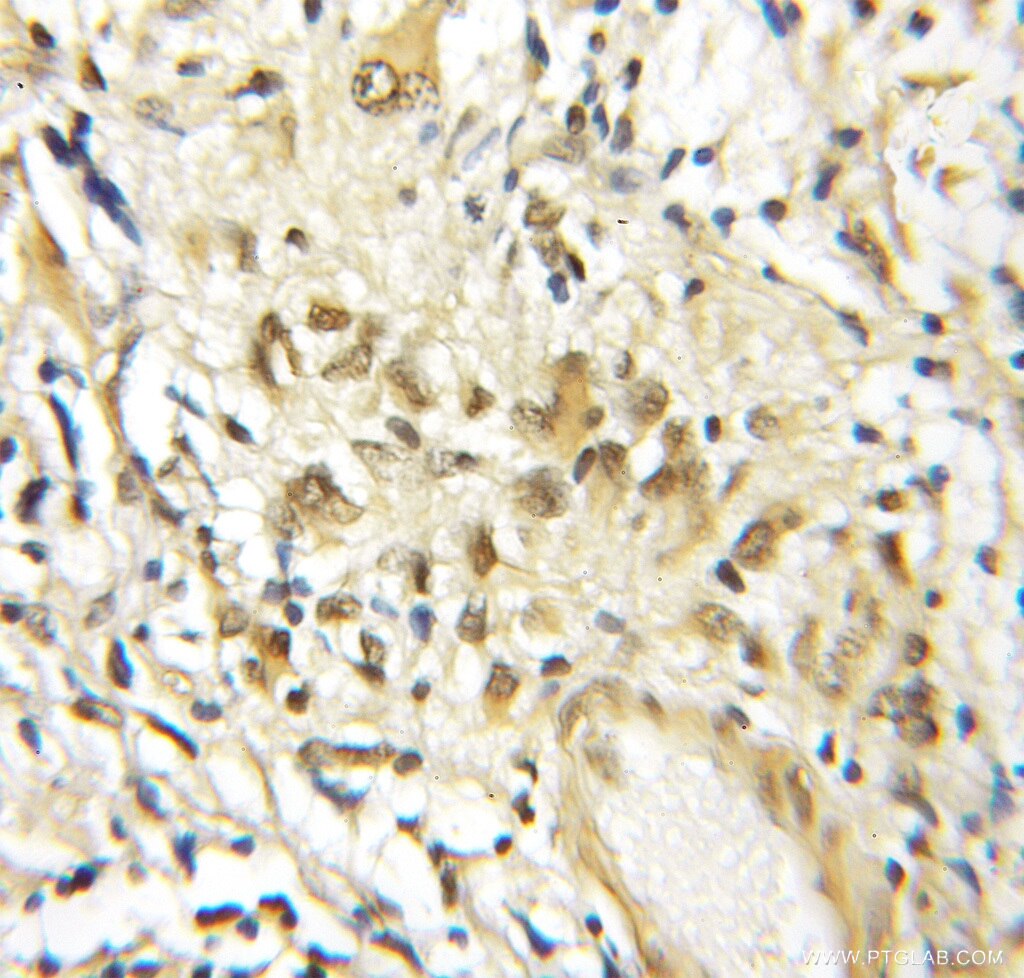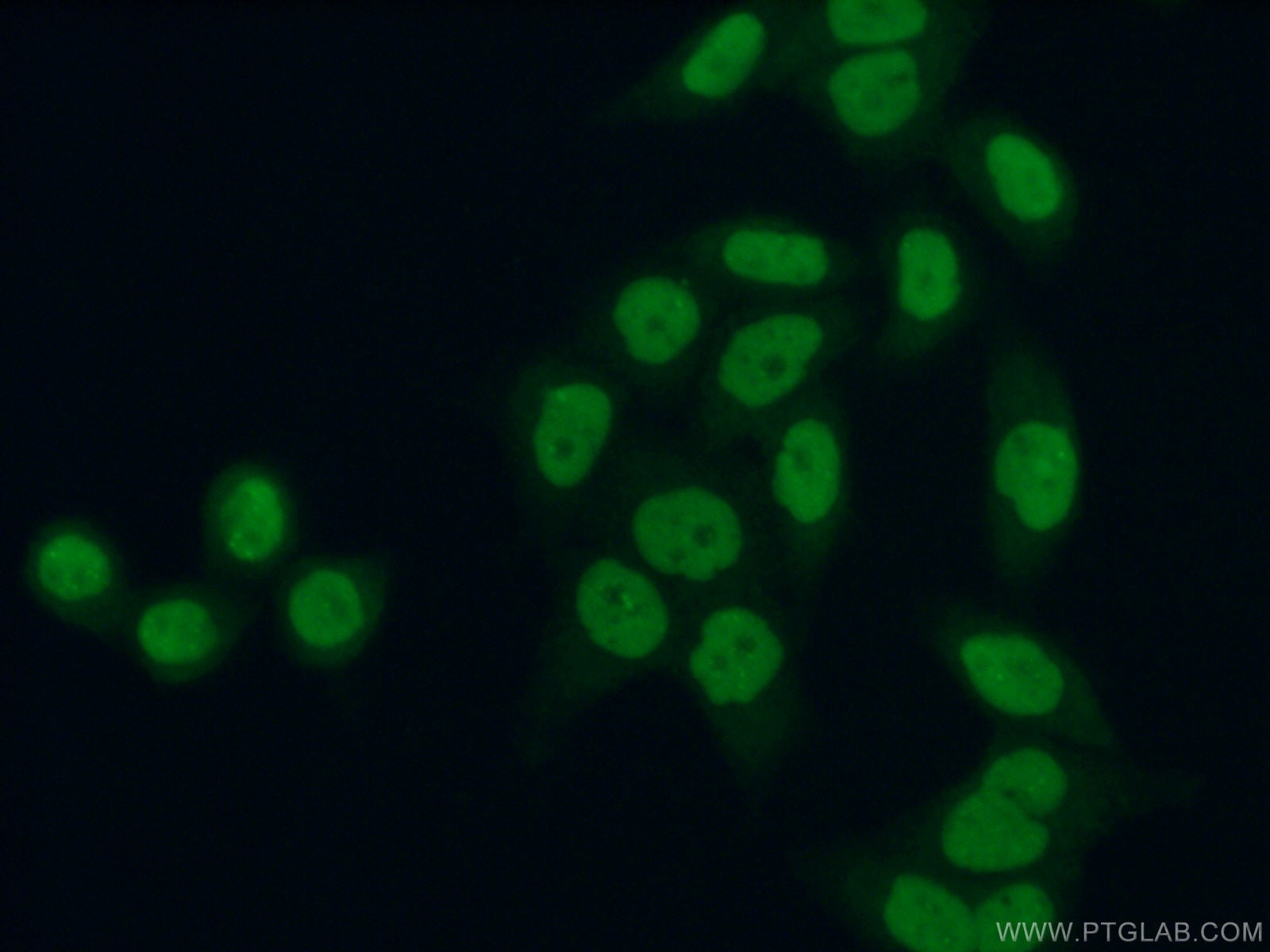- Phare
- Validé par KD/KO
Anticorps Polyclonal de lapin anti-BRD3
BRD3 Polyclonal Antibody for WB, IP, IF, IHC, ELISA
Hôte / Isotype
Lapin / IgG
Réactivité testée
Humain et plus (1)
Applications
WB, IHC, IF/ICC, IP, ELISA
Conjugaison
Non conjugué
N° de cat : 11859-1-AP
Synonymes
Galerie de données de validation
Applications testées
| Résultats positifs en WB | cellules HEK-293T, cellules COLO 320, cellules HeLa, cellules HepG2, cellules Jurkat, cellules K-562, cellules MCF-7 |
| Résultats positifs en IP | cellules HeLa |
| Résultats positifs en IHC | tissu de cancer de la prostate humain, tissu de gliome humain il est suggéré de démasquer l'antigène avec un tampon de TE buffer pH 9.0; (*) À défaut, 'le démasquage de l'antigène peut être 'effectué avec un tampon citrate pH 6,0. |
| Résultats positifs en IF/ICC | cellules HeLa |
Dilution recommandée
| Application | Dilution |
|---|---|
| Western Blot (WB) | WB : 1:500-1:1000 |
| Immunoprécipitation (IP) | IP : 0.5-4.0 ug for 1.0-3.0 mg of total protein lysate |
| Immunohistochimie (IHC) | IHC : 1:50-1:500 |
| Immunofluorescence (IF)/ICC | IF/ICC : 1:50-1:500 |
| It is recommended that this reagent should be titrated in each testing system to obtain optimal results. | |
| Sample-dependent, check data in validation data gallery | |
Applications publiées
| KD/KO | See 2 publications below |
| WB | See 25 publications below |
| IHC | See 2 publications below |
Informations sur le produit
11859-1-AP cible BRD3 dans les applications de WB, IHC, IF/ICC, IP, ELISA et montre une réactivité avec des échantillons Humain
| Réactivité | Humain |
| Réactivité citée | Humain, souris |
| Hôte / Isotype | Lapin / IgG |
| Clonalité | Polyclonal |
| Type | Anticorps |
| Immunogène | BRD3 Protéine recombinante Ag2433 |
| Nom complet | bromodomain containing 3 |
| Masse moléculaire calculée | 556 aa, 61 kDa |
| Poids moléculaire observé | 95-105 kDa |
| Numéro d’acquisition GenBank | BC032124 |
| Symbole du gène | BRD3 |
| Identification du gène (NCBI) | 8019 |
| Conjugaison | Non conjugué |
| Forme | Liquide |
| Méthode de purification | Purification par affinité contre l'antigène |
| Tampon de stockage | PBS avec azoture de sodium à 0,02 % et glycérol à 50 % pH 7,3 |
| Conditions de stockage | Stocker à -20°C. Stable pendant un an après l'expédition. L'aliquotage n'est pas nécessaire pour le stockage à -20oC Les 20ul contiennent 0,1% de BSA. |
Informations générales
BRD3 was belongs to the BET family that a small group of unique, highly conserved bromodomain-containing genes with four members in mouse and human. There are BRD2, BRD3, BRD4 and BRDT. And BET family proteins all localize in the nucleus, and contain two tandems N-terminal BRDs, an extra-terminal (ET) domain and a more divergent C-terminal recruitment domain (PMID:25849938). BRD2, BRD3, and BRD4 play key roles in transcription of genes required for both inflammation and cancer. Northern hybridization revealed that BRD3 is most abundant in testis, ovary, placenta, uterus, and brain(PMID:15261828; PMID:27451123). The antibody could recognize the common about 100 kDa protein in applications as the papers (PMID:29437854; 22595521).
Protocole
| Product Specific Protocols | |
|---|---|
| WB protocol for BRD3 antibody 11859-1-AP | Download protocol |
| IHC protocol for BRD3 antibody 11859-1-AP | Download protocol |
| IF protocol for BRD3 antibody 11859-1-AP | Download protocol |
| IP protocol for BRD3 antibody 11859-1-AP | Download protocol |
| Standard Protocols | |
|---|---|
| Click here to view our Standard Protocols |
Publications
| Species | Application | Title |
|---|---|---|
Nat Med Prostate cancer-associated SPOP mutations confer resistance to BET inhibitors through stabilization of BRD4. | ||
Mol Cell A di-acetyl-decorated chromatin signature couples liquid condensation to suppress DNA end synapsis | ||
Nat Commun Stromal induction of BRD4 phosphorylation Results in Chromatin Remodeling and BET inhibitor Resistance in Colorectal Cancer. | ||
Nat Commun A proximity biotinylation-based approach to identify protein-E3 ligase interactions induced by PROTACs and molecular glues. |
Avis
The reviews below have been submitted by verified Proteintech customers who received an incentive forproviding their feedback.
FH Zehua (Verified Customer) (02-06-2019) | Works well on fractionation lysates of MCF-7 cells.
 |









